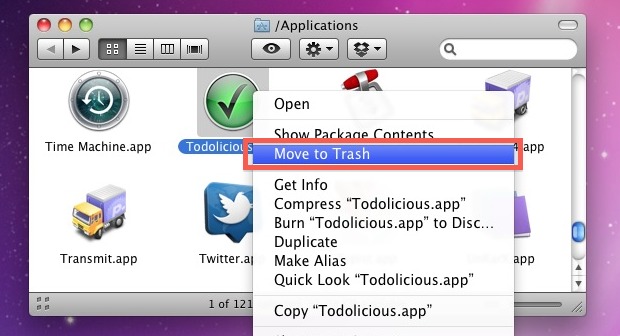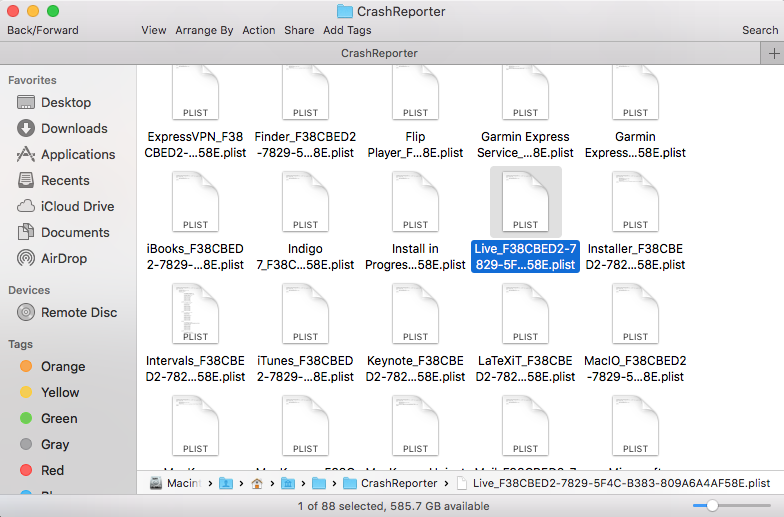A new version of Microsoft Office may be ready for the Mac soon. Is it as important as it used to be?
In most cases when you run the Microsoft Office Setup program on a computer with an earlier version of Office installed, the earlier version is removed. However, there are instances when an uninstall is necessary, such as if you run into errors or problems during installation. For Mac only You may need to remove older Office licenses after. Click Start Control Panel. Click Programs Programs and Features. Right-click the Office application you want to remove, and then click Uninstall. Follow the prompts to complete the uninstall. Jul 17, 2015 Some are packages that do not participate in package ref-counting – often those that we do not build. Some package may be left behind because uninstalling packages in Visual Studio (or any WiX bundle, for that matter) is a best-effort attempt. If a package fails, uninstall will move on to uninstall the next package.

Rumor has it that Microsoft is on the cusp of releasing a new version of Office for Mac. It's been more than three years since the last version of Office came out. Things have changed a lot. Is Microsoft Office still important?
Since Office's last major release on the Mac, Apple made a major strategic move to trump Microsoft: It began to include productivity apps as part of the standard suite of software applications included on all new Macs and iOS devices. You used to have to buy iWork apps — Pages, Keynote and Numbers — separately, but now you get them for free.
Those three apps fill in the gaps for some users who need word processing, spreadsheet and presentation software capabilities. There are certainly some benefits, too, such as iCloud support and binary compatibility for documents, making it simple to edit files on your Mac and use them on your iPad, or vice versa.
Other options have emerged, too. Free software alternatives to Office like LibreOffice may still raise eyebrows, but Google has normalized many people to using Google Docs for their productivity software and collaboration needs, for example.
iWork is good, but it's not that good. As I said back in February, 'Almost' isn't good enough. Despite the advances that Apple has made, Microsoft Office still reigns supreme in corporate environments and elsewhere. Many businesses and institutions continue to rely on Office as their standard.
Like most alternative productivity suites, iWork apps try to be good corporate citizens, offering Office file compatibility for import and export, but there's a difference between file compatibility and native file support, and many users of iWork apps and other tools have run into issues with documents just not looking right when they're translated into Office formats.
As I said at the outset, Apple has changed, but so has Microsoft. Much of their focus has been to make Office a subscription-based service rather than a monolithic software suite that gets updated once every few years.
You can still buy Office in a single user version. But Microsoft is following Adobe's Creative Cloud lead, offering an annual subscription with the promise of regular updates, along with other benefits, such as the ability to share one subscription with multiple devices, a free OneDrive cloud service account with 20 GB of storage, free Skype world minutes and more.
Of course, a new version of Office for Mac is only one tantalizing piece of the puzzle. The other is a version of Office that will run on iPads. Microsoft expert Mary Jo Foley suggested in February that an iPad version is coming sooner than people think, perhaps some time in the first half of 2014. A well-integrated Mac and iPad Microsoft Office ecosystem would certainly be fierce competition for Apple, which is still in a rebuilding year after gutting the iWork apps to get them to work more seamlessly across iOS and OS X.
Another piece of the puzzle: Microsoft may bring OneNote to the Mac in the next few weeks. Microsoft's note-taking app is a decade old, but it's not available in Mac native form, leaving the market wide open for competitors like Evernote to dominate.
Office remains one of the best selling software packages for the Mac. Lots of Mac users depend on Office to get their work done, and that's unlikely to change. Office is still front and center for many in the corporate and institutional worlds.
The combination of a new version of Microsoft Office for Mac, Office for iPad and OneNote for Mac suggests that Microsoft still thinks that Apple's platforms are still fertile ground. Even if you don't like Microsoft's products, you have to admit that the company's continued support is a net positive: It makes it easier to justify using Macs and iOS devices in enterprise and reduces friction for users who want to effortlessly produce documents that their non-Apple using colleagues can work.
To answer my initial question, Microsoft Office's role has changed. It's no longer irreplaceable - fact is, there are a lot of options people can use if they want to produce word processing docs, spreadsheets and attractive presentations. But Office is still a vital and important tool for many of us, and that won't change.
Are you looking forward to a new version of Office for the Mac? Will you migrate to new Office apps for OS X and iOS? Let me know what you think in the comments.
⌚ï¸x8F✨😎
We review the subtly blingy LAUT OMBRE SPARKLE Strap for Apple Watch
Bring a little bit of sparkle to your wrist, but not too much, with this colorful genuine leather Apple Watch band.
-->Note
Office 365 ProPlus is being renamed to Microsoft 365 Apps for enterprise. For more information about this change, read this blog post.
Symptoms
When you try to start PowerPoint for Mac, you may receive the following error message:
Microsoft PowerPoint has encountered a problem and needs to close. We are sorry for the inconvenience.
Cause
This behavior may occur if any one of the following conditions is true:
- PowerPoint preferences are corrupted.
- Programs running in the background are interfering with PowerPoint.
- Application files are corrupted.
- A user account profile is corrupted.
Resolution
To resolve this issue, follow these steps. You may find it helpful to print this article before you continue.
Step 1: Quit all applications and close all windows
On the Apple menu, click Force Quit.
Select an application in the 'Force Quit Applications' window.
Click Force Quit.
Repeat the previous steps until you quit all active applications.
Warning
When an application is force quit, any unsaved changes to open documents are not saved.
When you are finished, click the red button in the upper-left corner of the screen, and then go to 'Step 2.'

Step 2: Remove PowerPoint Preferences
Quit all Microsoft Office for Mac applications.
On the Go menu, click Home.
Open Library.
Note
The Library folder is hidden in MAC OS X Lion. To display this folder, hold down the OPTION key while you click the Go menu.
Open the Preferences folder.
Look for a file that is named com.microsoft.powerpoint.plist. If you locate the file, move it to the desktop. Start PowerPoint, and check whether the problem still occurs. If you cannot locate the file, the application is using the default preferences.
If the problem still occurs, quit PowerPoint, and restore the file to its original location. Then, go to the next step. If the problem seems to be resolved, you can move the com.microsoft.powerpoint.plist file to the trash.
Quit all Microsoft Office for Mac applications.
On the Go menu, click Home.
Open Library.
Note
The Library folder is hidden in MAC OS X Lion. To display this folder, hold down the OPTION key while you click the Go menu.
Open the Preferences folder.
Open the Microsoft folder.
Look for a file that is named com.microsoft.powerpoint.prefs.plist. If you locate the file, move it to the desktop. Start PowerPoint, and check whether the problem still occurs. If you do cannot locate the file, the application is using the default preferences.
If the problem still occurs, quit PowerPoint, and restore the file to its original location. Then, go to the next step. If the problem seems to be resolved, you can move the com.microsoft.powerpoint.prefs.plist file to the trash.
If the problem continues to occur, go to the next step.
Step 3: Perform a clean startup
For information how to 'clean start' your computer, click the following article number to view the article in the Microsoft Knowledge Base:
2398596 How to use a 'clean startup' to determine whether background programs are interfering with Office for Mac
If the problem continues to occur, go to the next step.
Step 4: Create a new user account
Sometimes, a specific user's information may become corrupted, and this may prevent installation, startup, or use of some applications. To determine whether this is the case, you can log on to the computer by using a different or new user account, and then test the application.
If the problem no longer occurs, the cause exists within the user's home folder. If you think that the user account was responsible, you can continue to troubleshoot by using the new user account.
Note
For help moving your user files to the new account, contact Apple.
If the problem continues to occur, go to the next step.
Step 5: Use the 'Repair Disk Permissions' option
You can use the Repair Disk Permissions option to troubleshoot permissions problems in Mac OS X 10.2 and later versions. If the permissions for your Microsoft software are incorrect, Office for Mac applications may start slowly or perform slowly. To use the Repair Disk Permissions option, follow these steps:
- On the Go menu, click Utilities.
- Start the Disk Utility program.
- Click the primary hard disk drive for your computer.
- Click the First Aid tab.
- Click Repair Disk Permissions.
Note
The Disk Utility program only repairs software that is installed by Apple. This utility also repairs folders, such as the Applications folder. However, this utility does not repair software that is in your home folder.
Microsoft Suite Programs
Step 6: Remove and then reinstall Office
For information about how to manually remove and then reinstall Office, see the following article:
Third-party disclaimer information
The third-party products that this article discusses are manufactured by companies that are independent of Microsoft. Microsoft makes no warranty, implied or otherwise, about the performance or reliability of these products.
Microsoft Office Suite
The information and the solution in this document represent the current view of Microsoft Corporation on these issues as of the date of publication. This solution is available through Microsoft or through a third-party provider. Microsoft does not specifically recommend any third-party provider or third-party solution that this article might describe. There might also be other third-party providers or third-party solutions that this article does not describe. Because Microsoft must respond to changing market conditions, this information should not be interpreted to be a commitment by Microsoft. Microsoft cannot guarantee or endorse the accuracy of any information or of any solution that is presented by Microsoft or by any mentioned third-party provider.